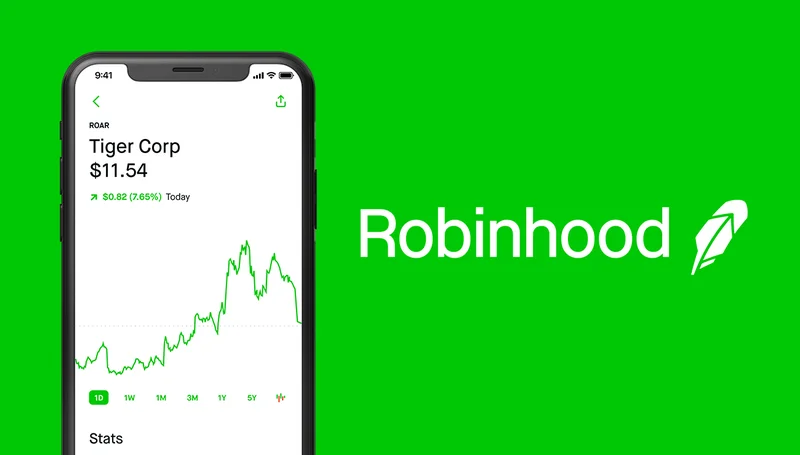Robinhood’s 288% surge in 2025 is a fascinating case study in market psychology. The stock is outperforming some of the most dominant names in artificial intelligence, including Nvidia and Palantir. On the surface, it’s a spectacular success story. An investor who bought into the Robinhood stock at the start of the year would be sitting on life-altering gains.
But when you move past the headline number and look at the engine under the hood, a different picture emerges. The company’s valuation has become completely detached from its operational reality. The current market enthusiasm appears to be built on two key narratives: the company’s recent inclusion in the S&P 500 and a strategic pivot into sports prediction markets. My analysis suggests both of these pillars are far too weak to support a $123 billion market capitalization.
What we’re witnessing feels less like a rational assessment of future cash flows and more like a feedback loop of pure momentum. The question is, how long can it last before gravity reasserts itself?
Let’s first address the catalysts driving the optimism. The S&P 500 inclusion in September was a significant event, but it's crucial to understand what it is and what it isn't. It's a technical driver (an event that forces index funds to buy shares, regardless of fundamentals), not a validation of the underlying business. It guarantees demand from a certain class of institutional buyer, but it says nothing about the health of Robinhood’s core operations.
The second, more substantive narrative is the partnership with Kalshi to enter the world of prediction markets, specifically for NFL and college football. The bull case is that this opens up a new, high-growth revenue stream in an industry projected to be worth over $33 billion by 2030. It’s a clever move, an attempt to tap into the same demographic that trades meme stocks and crypto on the Robinhood app.
But let’s put this in perspective. The entire U.S. sports betting market is a fraction of the financial securities industry where Robinhood primarily operates. This pivot is like a homeowner with a crumbling foundation spending a fortune on a beautiful new mailbox. It might improve the curb appeal and generate some excitement, but it does absolutely nothing to fix the structural problems threatening the entire house. Is the market truly pricing in a future where this side-business not only succeeds but becomes large enough to justify the current valuation, or is this just speculative froth clinging to any piece of good news?
The numbers suggest the latter. Robinhood’s core business is showing signs of serious strain. The company’s transaction revenue has fallen for two consecutive quarters. The primary culprit? Its volatile, unreliable dependency on cryptocurrency trading.

If you’ve followed Robinhood trading for a few years, this story should sound eerily familiar. In the second quarter of 2025, revenue from crypto trading fell by more than half—to be precise, a 55% drop to just $160 million. This single segment’s collapse was enough to drag the company’s entire transaction revenue figure down, even as other areas like options trading grew.
This isn’t a new phenomenon. It’s a replay of the 2021-2022 cycle. In Q2 2021, at the height of the crypto frenzy, bitcoin robinhood and dogecoin trading propelled the company to record revenue. A year later, in Q2 2022, that same revenue stream had collapsed by a staggering 75%. The result? Robinhood’s stock price cratered by over 90% from its peak.
And this is the part of the analysis that I find genuinely baffling. The market is rewarding a business model that has already demonstrated its own catastrophic volatility. The stock’s performance is directly correlated with the speculative whims of the crypto market, a market where popular assets like Dogecoin and Shiba Inu are down 48% and 64% from their recent highs, respectively. This does not bode well for Robinhood’s revenue as we head into 2026.
Making matters worse is the stagnation in user growth. While competitors like SoFi are growing their customer base at a 51% annual rate, Robinhood’s funded accounts have barely increased since 2021. Interactive Brokers, a direct competitor with a similar market cap, is also adding customers at a much faster clip and caters to higher-value professional investors. Robinhood isn't just failing to grow; it's being outpaced by its rivals, prompting some analysts to make a bold Prediction: 2 Stocks That Will Be Worth More Than Robinhood Markets 10 Years From Now.
This brings us to the valuation, which is where the logic completely breaks down. With its revenue shrinking sequentially, Robinhood stock is trading at a price-to-sales (P/S) ratio of more than 37. This is the most expensive the stock has ever been. Its long-term average P/S is 10.3. A 70% decline from its current price would simply return it to its historical average valuation. The stock’s P/E ratio sits at 77, more than double that of the faster-growing and more stable Interactive Brokers (P/E of 38).
What level of explosive, unprecedented growth would be required to justify these metrics? And where, in any of the company’s filings or strategic announcements, is the evidence that such growth is even remotely plausible?
The 288% run-up in Robinhood stock in 2025 has nothing to do with fundamentals. It is a momentum-fueled rally built on a weak narrative and a disregard for the company’s deteriorating core business. The reliance on the crypto casino has already burned investors once, and the data clearly shows the cycle is repeating itself. While the Kalshi partnership is an interesting experiment, it is nowhere near significant enough to offset the rot in the company's main revenue engine. Right now, buying Robinhood stock isn't an investment in a business; it's a bet that the psychology of the market can defy financial gravity indefinitely. That is not a bet I would be willing to make.